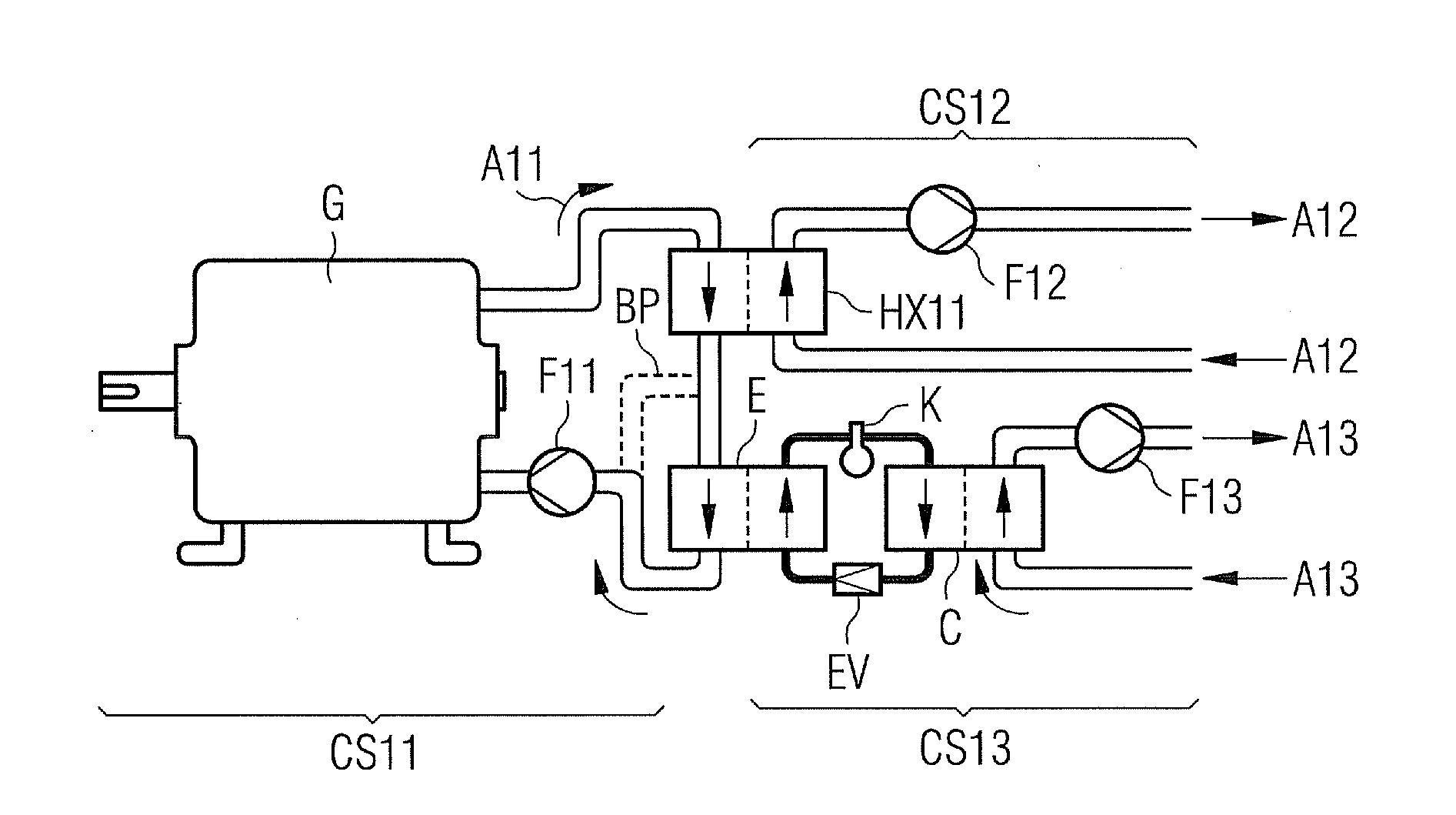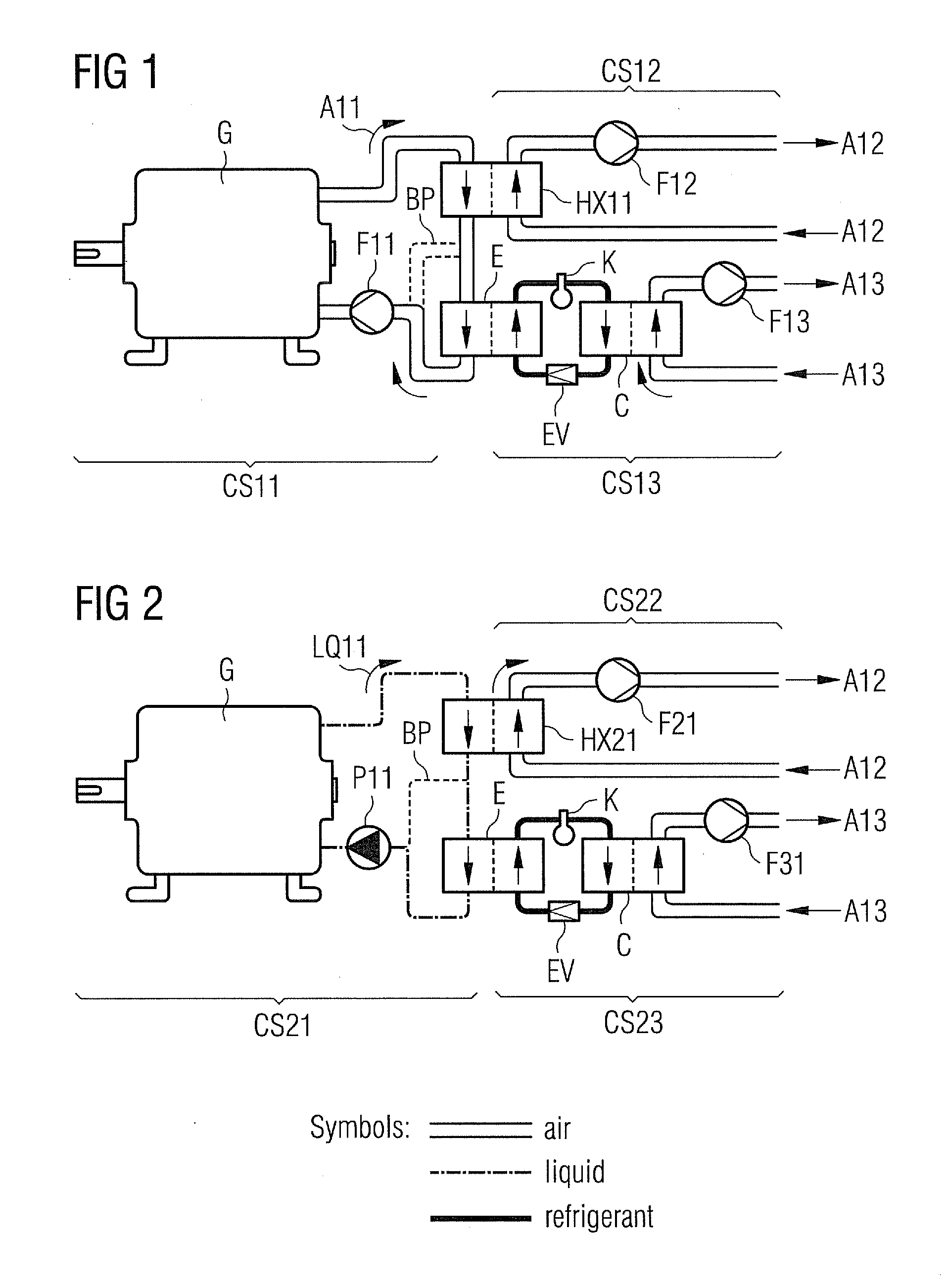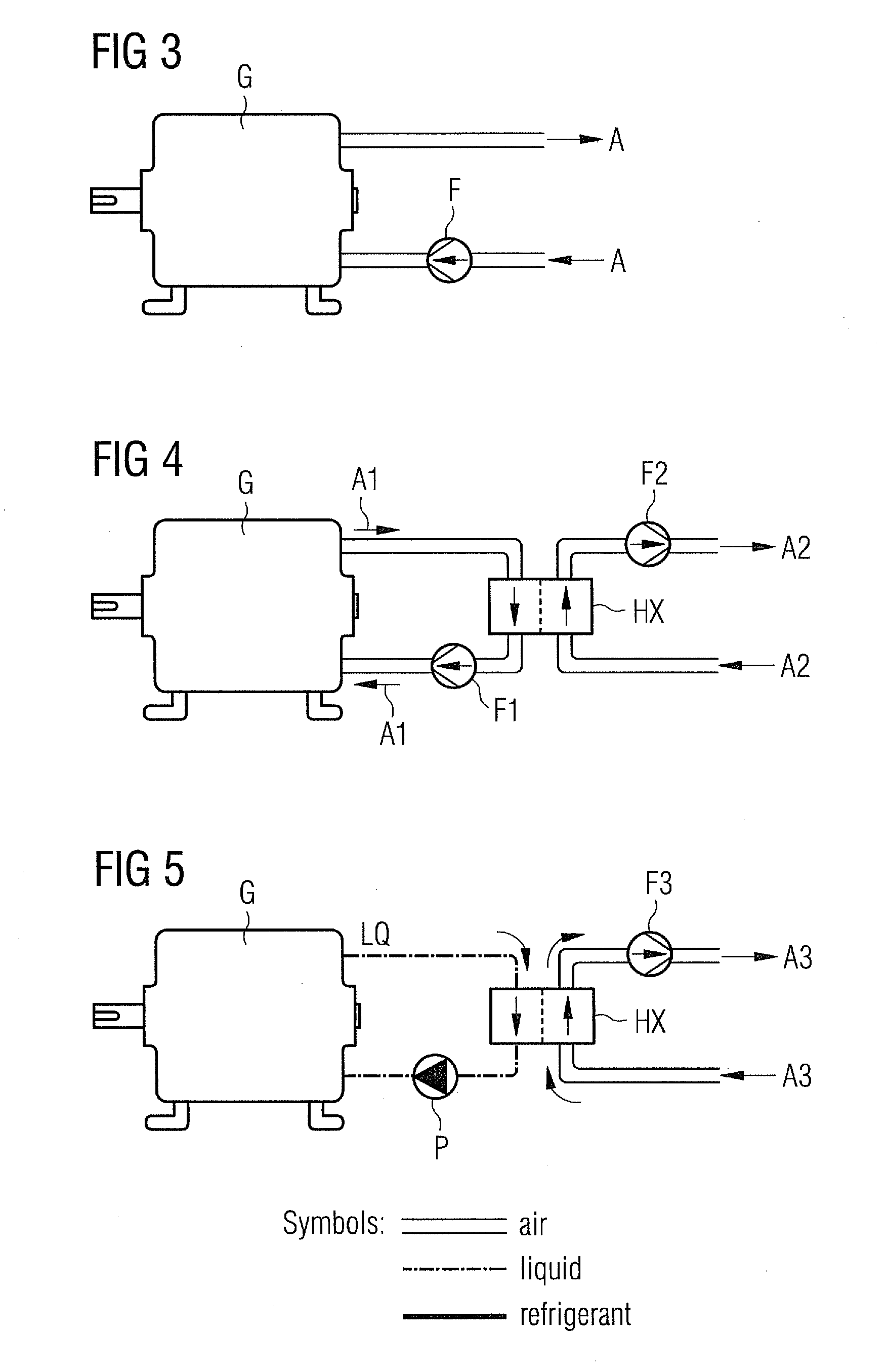Arrangement for Cooling of an Electrical Machine
- Summary
- Abstract
- Description
- Claims
- Application Information
AI Technical Summary
Benefits of technology
Problems solved by technology
Method used
Image
Examples
first embodiment
[0048]FIG. 1 shows the inventive cooling-arrangement, which is based on an air-cooled generator G.
[0049]The generator G is located offshore and / or at hot sites in a nacelle of a wind-turbine in a preferred embodiment.
[0050]There is a first cooling system CS11, which is connected with the generator G for its direct cooling. This first cooling-system CS11 comprises a fan F11 to enforce the flow of cooling-air A11 through the generator G.
[0051]There is a second cooling system CS12 with a fan F12. Ambient air A12 is forced to flow through the second cooling-system CS12 by help of a fan F12.
[0052]The second cooling system CS12 is connected with the first cooling-system CS11 via an air-to-air heat-exchanger HX11. The heat-exchanger HX11 is used to hand-over dissipated heat from the cooling-air A11 to the ambient air A12.
[0053]According to the invention there is a third cooling-system CS13, which is a refrigeration-system. The third-cooling-system CS13 is connected with the first cooling-s...
second embodiment
[0058]FIG. 2 shows the inventive cooling-arrangement, which is based on a liquid-cooled generator.
[0059]The generator G is located offshore and / or at hot sites in a nacelle of a wind-turbine in a preferred embodiment.
[0060]There is a first cooling system CS21, which is connected with the generator G for its direct cooling. This first cooling-system CS21 comprises a pump P11 to enforce the flow of a cooling-liquid LQ11 through the generator G.
[0061]There is a second cooling system CS22 with a fan F21. Ambient air A12 is forced to flow through the second cooling-system CS22 by help of the fan F21.
[0062]The second cooling system CS22 is connected with the first cooling-system CS21 via a liquid-to-air heat-exchanger HX21. The heat-exchanger HX21 is used to hand-over dissipated heat from the cooling liquid LQ11 to the ambient air A12.
[0063]According to the invention there is a third cooling-system CS23, which is a refrigeration-system. The third-cooling-system CS23 is connected with the ...
PUM
 Login to View More
Login to View More Abstract
Description
Claims
Application Information
 Login to View More
Login to View More - Generate Ideas
- Intellectual Property
- Life Sciences
- Materials
- Tech Scout
- Unparalleled Data Quality
- Higher Quality Content
- 60% Fewer Hallucinations
Browse by: Latest US Patents, China's latest patents, Technical Efficacy Thesaurus, Application Domain, Technology Topic, Popular Technical Reports.
© 2025 PatSnap. All rights reserved.Legal|Privacy policy|Modern Slavery Act Transparency Statement|Sitemap|About US| Contact US: help@patsnap.com



